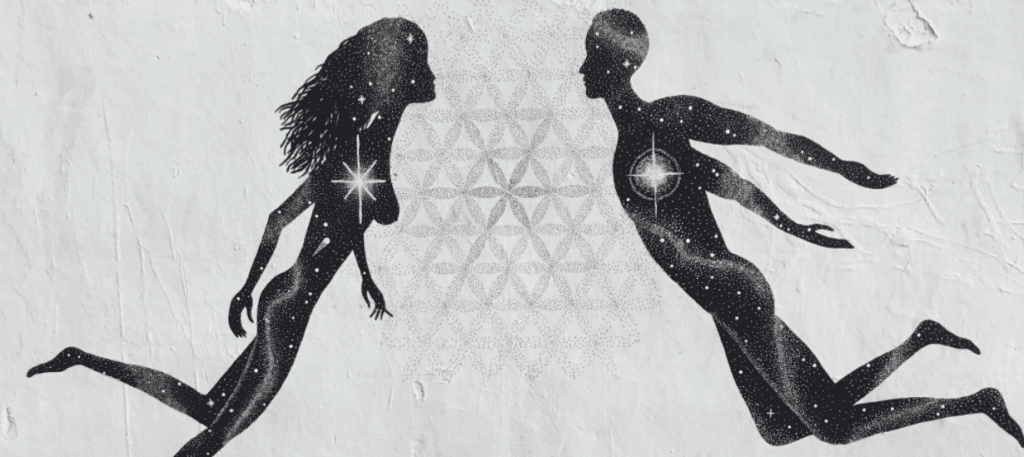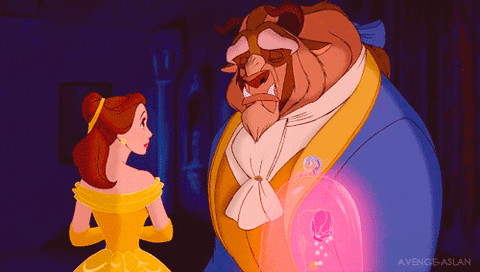
We often associate the word attraction with someone’s physical appeal, but there’s far more to attraction than meets the eye. While all of us experience attraction, it can be tricky to understand. Just like there’s no single way to love, there is no single way to be attracted to someone. Knowing the different types of attraction can help us understand our feelings so we take conscious action and develop various satisfying relationships. (Estimated reading time: 11 minutes)
“Love does not see with the eyes, but with the soul.”
— William Shakespeare
Have you ever felt unexpectedly pulled toward someone and wondered why you’re drawn to them? You might also ask yourself, what makes someone attracted to you?
The answer has a lot to do with attraction. Although we often associate the word attraction with someone’s physical appeal, there is far more to attraction than meets the eye.
While attraction is a universal feeling, it can be tricky to understand. Just like there’s no single way to love, there is no single way to experience attraction. That’s why it can be confusing if, for instance, you’re emotionally attracted to someone but not romantically.
You may enjoy spending time with someone and feel comfortable opening up to them, but you don’t see yourself in a romantic relationship. Yet, most people view being friend-zoned as a failure because they think the other person isn’t attracted to them when they often are. Just not in the way they desire.
Attraction is also profoundly personal. What you find attractive can make another person cringe. The rugged, strong, muscular men your friend fancies might turn you off because you prefer preppy, studious guys with more effeminate features. As the adage goes, “Beauty lies in the eye of the beholder.”
Pop culture peddles a limited version of attraction. If a person shows interest in another, there is an assumption that they are attracted to them in an all-encompassing sense. This can lead us into relationships with people we’re physically attracted to without looking for elements that lead to a harmonious, long-term relationship.
This multi-faceted, complex sensation we experience toward others is as dynamic and colorful as our personalities are. Knowing the different types of attraction can help us form various satisfying relationships that fulfill our unique needs.
What is attraction, and how does it influence us?

Attraction can be defined as affinity, interest, or desire for someone or something. They are different types of attraction – it can be romantic and sexual, but it can also be emotional, intellectual, or platonic. It can vary from taking an interest in someone’s thoughts and ideas to admiring someone’s style and beauty.
Attraction is the glue that connects us and builds supportive communities, no matter what form it takes. Many forces are involved in the blend of attraction, such as biological, psychological, and even spiritual.
That’s why there’s no clear-cut answer to why we feel drawn to certain people. There is no defining factor we can pinpoint. It’s like tasting a dish with several different ingredients but not being able to discern what exactly is in it. All we can do is taste the final product and savor its defining flavor.
The power of attraction is beyond our control. The unexplained desire to get closer to someone urges us to explore possibilities in the romantic or platonic sense. Our psychic antennae perk up, and we’re intuitively called to reach out to this person, even if we don’t know why, and see where it takes us.
When we’re attracted to someone, we’re more likely to see them as likable, funny, intelligent, and having other positive qualities. This phenomenon, called the halo effect, can mislead us in our evaluation of someone’s character.
Understanding human attraction and the various types of attraction can give us valuable insight into the complex nature of attraction and help us make sense of our own feelings. With this self-awareness, you’ll know how to handle and what to expect from your connections and have more rewarding interpersonal experiences.
How does attraction work?
There are many factors of attraction. Here are five of the main ones:
1. Hormones
From a biological standpoint, hormones play a role in attraction. When we’re attracted to someone sexually, there is an increase in testosterone and estrogen that fuels sexual desire and increases our appeal to our person of interest. However, we release different hormones, like dopamine and oxytocin when attached to someone romantically or platonically, as with family members and friends.
2. Pheromones
Pheromones, chemicals released by animals, including humans, also impact the physiology of other members of a species. In humans, pheromones influence attraction by activating brain areas connected to sexual arousal, such as the amygdala and hypothalamus.
3. Genetics
Genetics have been shown to influence the type of person we are attracted to. Studies show that we gravitate towards those with whom we share similar genetic traits. This is known as assortative mating.
Positive assortative mating occurs when choosing a partner with whom we share common features, like the same eye color. Negative assortative mating, on the other hand, occurs when someone avoids coupling with people who are similar to them, like biracial couples. This usually happens when a person is more adventurous and open and is looking for more exciting connections rather than familiar and predictable ones.
4. Geography
We tend to be more attracted to people who live in our geographical location because we have more access to them and can see them regularly. Proximity promotes friendship and partnership because the more often we meet them, the more familiar they are to us, which boosts attraction.
5. Similar backgrounds and interests
On a subconscious level, we’re comforted when we’re with someone similar to us. If they are similar in age, race, religion, education, lifestyle, hobbies, profession, social class, and personality, it is easier to get along with them as they can understand us better.
6. Social exchange theory
In the pecking order of life, we prefer to associate with those who can offer the most rewards while demanding the least effort. This is known as the social exchange theory. It makes us look for someone who can offer us the most resources, like comfort, financial security, and connections, in exchange for what we can offer them, whether that is tangible assets or simply our loyalty and commitment.
7. Evolutionary psychology
We are genetically wired to find partners who maximize the chances of producing healthy offspring. According to this theory, we instinctively look for those with high fertility (ability to bear children) and who would make the best parents (ability to raise them). Physical traits, such as health and intelligence, and personal qualities, such as loyalty and kindness, are indicators of this.
The different types of attraction

An attractive person prompts you to pursue a relationship with them, but it could also be a fleeting feeling you forget the next day. If you’re wondering what’s causing you to be drawn to them, it could be because you’re under the influence of one or more of these types of attraction:
1. Romantic attraction
Romantic attraction is the type of attraction in which people desire a romantic relationship. You could have a romance without the sexual or physical component, but it will be more than a friendship. The connection is more profound and may be exclusive or non-exclusive.
Romantic attraction can grow from a platonic friendship. Two friends can become romantically attracted to each other over time. We saw this happen in the TV sitcom, “Friends,” where Monica and Chandler found each other romantically attractive and decided to enter into a relationship. Relationships that grow from friendship are the best because the couple has a foundation of camaraderie to support them.
2. Sexual attraction
This is the type of attraction that people are most familiar with, primarily because of the influence of the media. As the name suggests, it’s an attraction based on the desire to engage in sexual activity. It can bring up feelings of lust and arousal, increasing, decreasing, or changing depending on the circumstances.
It’s often present in long-term romantic relationships, but not always. It can also be present in short-term relationships like hookups and one-night stands, and can even be felt towards someone you’ll never be intimately involved with, like a celebrity or a crush.
3. Physical attraction
Physical attraction involves a desire to touch and be touched, but not necessarily in a sexual way. It can include hugging, kissing, and caressing in a loving and nurturing way. This is a natural and instinctive behavior for humans because it’s essential to survival. Since we were babies, we have needed to be touched and held to feel love and safety.
Some people we want to touch are outside the context of sexual or romantic connections, such as friends, family members, and children. A critical component of physical attraction is considering the other person’s comfort. Depending on how close you are to them, you may need to consider their boundaries, social setting, and cultural background.
4. Intellectual attraction
Intellectual attraction occurs when we feel drawn to a person’s thoughts and knowledge. On this level, the connection is more cerebral, but not exclusively – some romantic couples can be intellectually attracted to each other.
Sometimes, intellectual attraction can lead to sexual attraction – a person who experiences this is called a sapiosexual.
When you are intellectually attracted to someone, you can discuss various topics that stimulate your mind and cause you to see things from new, fresh, and unconventional perspectives. It challenges you to think differently and explore new territory. This may cause you to want to pick someone’s brain and seek their advice and opinion on things, as in the case of mentors, colleagues, and teachers.
5. Emotional attraction
Emotional attraction is the sense of being connected to another person’s emotional realm. A bond formed based on emotional attraction can help maintain long-term relationships. When your heart is invested in someone, you care about them and are more likely to pay attention to them and stay loyal.
This deep intimacy is found in healthy relationships of all types, romantic or otherwise. Bonding deeply and meaningfully can lead to solid attachments with people we grow to love, whether that be a significant other, a family member, a friend, or a child.
6. Aesthetic attraction
Like most people, you have a specific type that you find visually appealing. People with a particular hair color, body type, or smile may get your attention. This type of attraction is primarily instinctual, but it’s also learned through social conditioning.
For instance, in the 50s, voluptuous women were considered desirable, but that changed in the next decade when waif thin women were seen as beauties. These social standards impacted the aesthetic attraction of people who lived in that time.
Aesthetic attraction can stay static but can also shift throughout our lives. It’s an essential precursor to romantic or sexual interest but isn’t enough to sustain a long-term relationship.
We may find someone aesthetically attractive but have no desire to be in a relationship. Someone who is happily coupled and sees someone beautiful may appreciate their pleasing appearance but will not make any moves because they love their partner.
7. Reciprocal attraction
We tend to like those who like us. This is the premise of reciprocal attraction. It’s when you develop an interest in someone, knowing that they find you attractive or have affection for you. Of course, this would magnify if you, too, are attracted to them, but even if that’s not the case, you’ll still take notice.
You may have experienced this when a friend told you that someone in your school had a crush on you. You were most likely flattered, and you wanted to know who it was because you were under the influence of reciprocal attraction.
8. Soul attraction
Soul attraction is one of the most profound types of attraction. It occurs when we meet people with whom we feel an unexplainable connection. You may have felt an instant pull that defies logic or reason upon meeting them. Even before getting to know them, you may have sensed a special dynamic you felt compelled to explore. This is most likely a soul attraction.
According to certain spiritual and religious traditions, these are people with whom we’ve made soul agreements before incarnating into human form and with whom we must resolve karmic issues to foster the evolution of our souls and our mission.
The attraction we sense when we encounter these people is a sign that we have a soul agreement with them. No matter what your beliefs are, know that you’re being drawn to a particular person for a reason and purpose, and taking note of your soul attraction can lead you to destined pathways.
How the types of attraction can help you navigate relationships

Attraction is complex and can be confusing, especially if you experience different types of attraction to various people at different points in your life. It’s possible to feel attracted differently toward one person or have one type of attraction evolve into another. Often, our interest can wane and dissipate.
A clear understanding of our feelings is essential to making good decisions. For instance, if you feel less physically attracted to your partner, investigate what has changed rather than simply breaking up with them.
Here are some guidelines that will help you understand your feelings better and take conscious action:
- Develop awareness about how you feel when you experience each type of attraction to recognize it when it comes up.
- Understand how each type of attraction influences your judgment of the other person. Is it accurate, or are you biased because of your attraction?
- Know what your love or relationship goals are and be able to communicate that with the people you feel attracted to. In this way, both singles and couples can minimize the chances of reducing misaligned expectations and misunderstandings.
- Develop boundaries early on so that you and others are comfortable and understand expectations.
- Distinguish attraction based on reality and fantasy and if exploring it is worth your time and energy.
- Realize that there is no right or wrong way to be attracted to someone. Acknowledge and accept your feelings for what they are, and don’t feel guilty about them. What you should do is manage it responsibly and respond appropriately.
- Know that attraction is not set in stone. Preferences and desires may change with time. Stay open, flexible, and communicate your feelings to those concerned.
Sufi poet Rumi once said, “Love comes on strong, consuming herself unabashed.” That’s a fitting description of our state when we’re in the throes of attraction. We have no choice but to pay attention. We may not have to act on it, but we must figure out what draws us to that being and what that says about us. Our attraction towards others merely mirrors what we’re looking for within ourselves.
All my best on your journey,
Seline

Questions for you: Which types of attraction have you experienced? Which occurred the most frequently? How differently did you feel in each case? Which was easier to handle and more challenging?
Did you like this post? Sign up below, and I’ll send you more awesome posts like this every week.

I am glad someone is talking about this! So many people love/attraction as romantic love but there are so many other types! And they are all so important and valuable, so I am glad someone is bringing this to light and making this someone is more common place. So thank you!
I find it interesting that many people know that there are different types of love and even different types of love languages. Yet people seem to forget or are completely unaware that there are different types of attraction and relationships as well! I think it would make life much easier if more people understood this!
I agree! We get so bombarded with certain images and concepts regarding love and attraction in media and everywhere else. I think many people forget how many love languages there are and how many types of love people can feel for each other. This definitely needs to be talked about more. Glad people are!
Thanks for the detailed education about attraction. Very informative article. I have posed a similar question on my blog as to whether love is blind and whether it consists of euphoria or calculated choices.